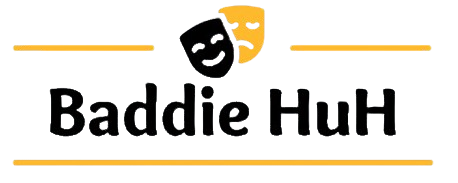Differences Between PTE and OET for Australian Visa and Career Paths

For anyone looking to work or study in Australia, understanding which English proficiency test suits your needs can be crucial. Two popular options are the Pearson Test of English (PTE) and the Occupational English Test (OET). Both exams are widely recognized in Australia, but they cater to different audiences and serve different purposes. This article will delve into the nuances of these tests, helping you choose the one most suited to your goals, whether it’s for academic, immigration, or professional purposes.
Overview of PTE and OET
PTE (Pearson Test of English) is a computer-based exam designed for non-native English speakers aiming to demonstrate their English proficiency for academic or immigration purposes. It covers four areas: Speaking, Writing, Reading, and Listening. PTE is accepted by many universities, immigration authorities, and employers worldwide, including in Australia.
OET (Occupational English Test) is specifically tailored for healthcare professionals. Its content reflects real-world tasks that healthcare workers are likely to encounter in an English-speaking environment. It focuses on Listening, Reading, Writing, and Speaking, but with a strong emphasis on medical terminology and scenarios.
Key Differences Between PTE and OET
Target Audience
- PTE is suited for anyone seeking general proficiency in English for academic, professional, or immigration purposes. It is recognized by numerous academic institutions and organizations globally, including in Australia, for visa applications and academic admissions.
- OET, on the other hand, is specifically designed for healthcare professionals, such as doctors, nurses, pharmacists, and dentists. The test evaluates your ability to communicate in medical settings, making it ideal for those aiming to work in Australia’s healthcare sector.
Test Content
- PTE assesses general English proficiency and includes a variety of questions on everyday communication. It’s ideal for those who want a broad evaluation of their English skills, not restricted to any particular professional context. Try free PTE mock test with EnglishWise and get to know how much you are prepared.
- OET uses medical scenarios to assess English proficiency. For instance, healthcare professionals will have to demonstrate their ability to write medical referral letters, understand patient consultations, and follow hospital communications. If you are in a healthcare field, OET provides more relevant, practical language testing.
Recognition and Acceptance
- Both PTE and OET are recognized by the Department of Home Affairs in Australia for visa purposes. However, PTE is generally more widely accepted across different sectors, including universities and non-healthcare-related professions.
- OET, though more niche, is accepted by major healthcare boards such as the Australian Health Practitioner Regulation Agency (AHPRA) and other healthcare governing bodies across Australia.
Difficulty Level and Preparation
- PTE is often seen as more straightforward, with its wide range of resources and practice materials available online. It may be easier for those with limited medical knowledge since it focuses on general English language skills. Test takers can get results within a few business days.
- OET may be perceived as easier for healthcare professionals already familiar with medical jargon, but it requires a strong command of healthcare-related English. Preparation materials for OET can be harder to find, and the medical content can make it more challenging for those not deeply embedded in the medical field.
Test Format and Scoring
- PTE is entirely computer-based, including the Speaking component, which involves responding into a microphone. The test is scored by an AI system, providing an objective assessment of your English abilities.
- OET includes a face-to-face speaking test, which may be more comfortable for those used to human interaction but might add pressure for some candidates. OET is scored with human evaluators, particularly in the speaking and writing sections.
Understanding the Differences Between PTE and OET for Australian Visa and Career Paths
For anyone looking to work or study in Australia, understanding which English proficiency test suits your needs can be crucial. Two popular options are the Pearson Test of English (PTE) and the Occupational English Test (OET). Both exams are widely recognized in Australia, but they cater to different audiences and serve different purposes. This article will delve into the nuances of these tests, helping you choose the one most suited to your goals, whether it’s for academic, immigration, or professional purposes.
Key Differences Between PTE and OET
- Target Audience
- PTE is suited for anyone seeking general proficiency in English for academic, professional, or immigration purposes. It is recognized by numerous academic institutions and organizations globally, including in Australia, for visa applications and academic admissions.
- OET, on the other hand, is specifically designed for healthcare professionals, such as doctors, nurses, pharmacists, and dentists. The test evaluates your ability to communicate in medical settings, making it ideal for those aiming to work in Australia’s healthcare sector.
- Test Content
- PTE assesses general English proficiency and includes a variety of questions on everyday communication. It’s ideal for those who want a broad evaluation of their English skills, not restricted to any particular professional context.
- OET uses medical scenarios to assess English proficiency. For instance, healthcare professionals will have to demonstrate their ability to write medical referral letters, understand patient consultations, and follow hospital communications. If you are in a healthcare field, OET provides more relevant, practical language testing.
- Recognition and Acceptance
- Both PTE and OET are recognized by the Department of Home Affairs in Australia for visa purposes. However, PTE is generally more widely accepted across different sectors, including universities and non-healthcare-related professions.
- OET, though more niche, is accepted by major healthcare boards such as the Australian Health Practitioner Regulation Agency (AHPRA) and other healthcare governing bodies across Australia.
- Difficulty Level and Preparation
- PTE is often seen as more straightforward, with its wide range of resources and practice materials available online. It may be easier for those with limited medical knowledge since it focuses on general English language skills. Test takers can get results within a few business days.
- OET may be perceived as easier for healthcare professionals already familiar with medical jargon, but it requires a strong command of healthcare-related English. Preparation materials for OET can be harder to find, and the medical content can make it more challenging for those not deeply embedded in the medical field.
- Test Format and Scoring
- PTE is entirely computer-based, including the Speaking component, which involves responding into a microphone. The test is scored by an AI system, providing an objective assessment of your English abilities.
- OET includes a face-to-face speaking test, which may be more comfortable for those used to human interaction but might add pressure for some candidates. OET is scored with human evaluators, particularly in the speaking and writing sections.
Pros and Cons of PTE and OET
PTE Pros:
- Faster results: You’ll receive your scores in 2-5 business days, making it an ideal choice if you’re in a hurry for visa applications.
- Widely accepted: PTE is accepted across various sectors, including academic and immigration purposes in Australia, Canada, and other countries.
- Easier to prepare: With a variety of resources and mock tests readily available, preparing for the PTE is generally more straightforward.
PTE Cons:
- Not profession-specific: If you’re a healthcare professional, PTE’s general content may not directly prepare you for the language demands of your job.
OET Pros:
- Healthcare-specific: Tailored for healthcare professionals, the OET tests your ability to communicate in medical settings, making it more relevant for those looking to work in hospitals or clinics.
- Professional development: By improving your professional communication in English, OET serves as a tool for career advancement.
OET Cons:
- Higher costs: OET tends to be more expensive than PTE, and its niche nature may limit its applicability outside the healthcare sector.
- Longer waiting time for results: OET results take around 12-16 business days, which can be a drawback if you need your scores quickly.
When to Choose PTE Over OET
Choose PTE if:
- You are applying for general academic courses or non-healthcare-related jobs in Australia.
- You need fast results for visa or university applications.
- You are not a healthcare professional and do not require medical-specific English proficiency.
When to Choose OET Over PTE
Choose OET exam if:
- You are a healthcare professional (nurse, doctor, etc.) seeking employment or registration in Australia’s healthcare sector.
- You want to be assessed on your ability to communicate in medical environments.
- You are confident in your medical terminology and seek a test that reflects your day-to-day professional communication.
Conclusion
Both the PTE and OET are valuable tools for proving English proficiency, but they serve different purposes. PTE is ideal for general purposes, quick results, and widespread recognition, while OET caters specifically to healthcare professionals who need to demonstrate their proficiency in medical English. Your choice between PTE and OET should depend on your professional goals, the requirements of your visa or institution, and your comfort level with the test content.




